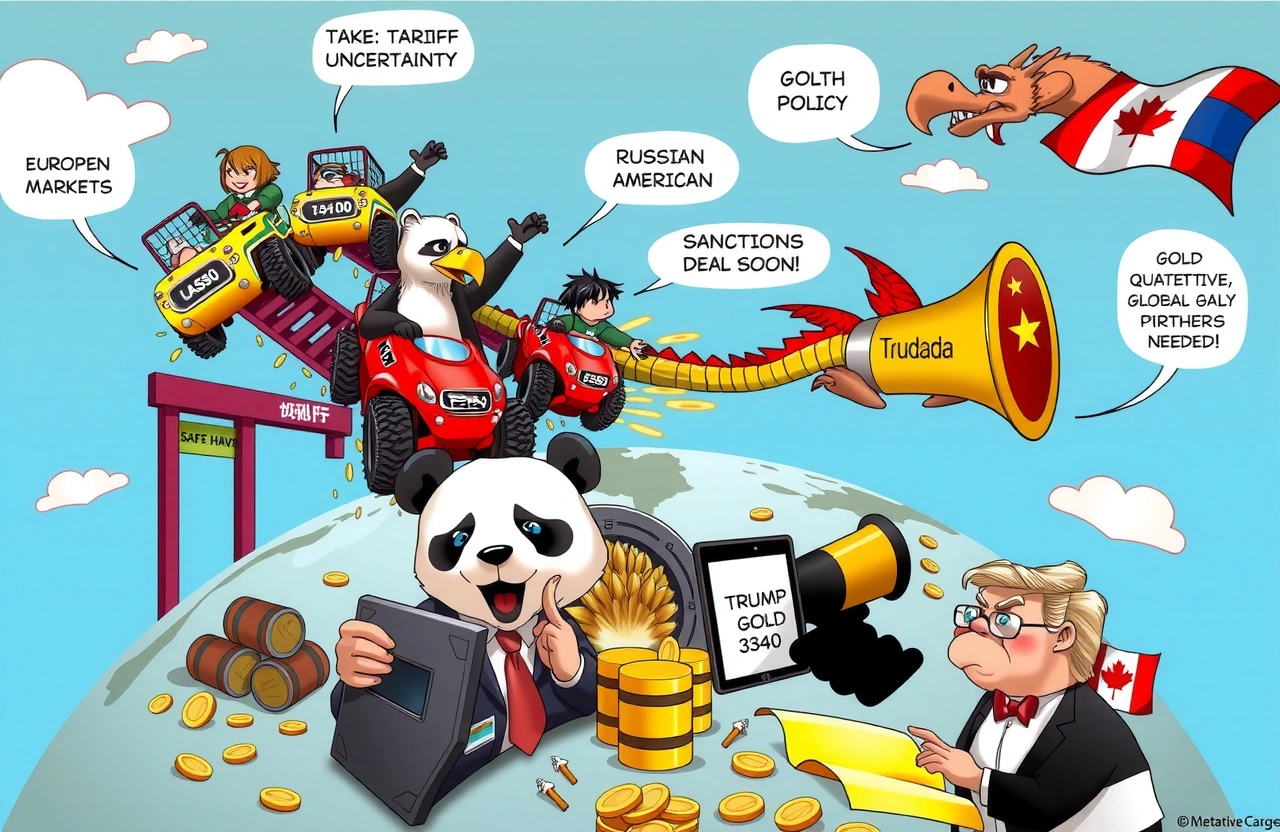The European Equity Rout
On July 11, 2025, European financial markets opened to unexpected turmoil as major indices nosedived minutes after trading commenced. Germany’s DAX30 plunged over 0.8%, dragged down by automotive and industrial stocks. France’s CAC40 followed with 0.6% losses while Britain’s FTSE100 sank 0.2%. Russia’s MOEX index suffered the sharpest blow—down over 1%—reflecting amplified volatility ahead of anticipated US foreign policy announcements. This synchronized crash mirrors rising anxiety across global markets regarding escalating trade conflicts and underwhelming economic indicators.
Sector-Specific Pressures
- Industrial & Auto Shares: Sharpest declines amid tariff uncertainty
- Financial Services: Negative yield curve impacts dampened earnings outlooks
- Commodity Producers: Mining stocks sank despite precious metals rally
The Safe Haven Surge
While equities tanked, precious metals soared as investors sought stability. Gold climbed decisively past $3,340 per ounce—a 0.6% intraday gain—while silver outperformed with over 1% appreciation. This divergence signals mounting risk aversion amid growing recognition that global market turbulence demands defensive positioning. Historical patterns reveal gold gains accelerating when investor confidence dips: during both Brexit referendum volatility and 2020 pandemic fears, bullion rose over 25% quarterly. Today’s rally extends gold’s monthly gain to 8.3%, validating its status as the ultimate hedge against geopolitical disruption.
Drivers Fueling Precious Metals
- Trade Policy Uncertainty: Immunity from tariff impacts
- Currency Diversification: Hedge against fluctuating fiat values
- Inflation Protection: Effective store of value
Economic Data Triggers
Fresh economic reports added impetus to the market moves. Britain’s May GDP unexpectedly contracted 0.1% (versus 0.1% growth forecasts), marking the first shrinkage in eight months alongside a £216.88 billion trade deficit. Meanwhile, France’s 1% June CPI exceeded projections, signaling inflationary pressures may constrain ECB stimulus options. These numbers compound existing European recession signals—Q1 eurozone growth stalled at 0.3% while manufacturing PMIs remained contractionary. Negative economic surprises reinforce market sensitivity to fiscal announcements.
Trump’s Pending Russia Announcement
Adding market uncertainty, former President Donald Trump declared a “major statement” on Russia scheduled for July 14 via Truth Social. Speculation centers on potential sanctions relief promises impacting European energy markets. Given Russia’s significant export ties to Germany (€36.1 billion trade volume) and France, any diplomatic shifts could disrupt existing supply chains. Historical context matters: Russia-related volatility since 2014 has repeatedly impacted European equities, notably energy stocks.
Tariff Tensions Escalate
The most consequential development emerged from escalating Canada-U.S. trade conflict. President Trump proclaimed tariffs of up to 35% on Canadian imports effective August 1. Prime Minister Justin Trudeau swiftly countered: “We’ll strengthen our global partnerships while defending Canadian interests.” This updates ongoing trade skirmishes stemming from August 2024 US taxes targeting Canadian lumber, dairy and EVs. With US absorbing 73% of Canadian exports—worth $466 billion annually—such tariffs threaten recessionary ripple effects across North American supply chains.
Sectors Facing Immediate Disruption
- Automotive Manufacturing
- Agriculture & Food Distribution
- Renewable Energy Equipment
Strategic Responses to Uncertainty
Several approaches help investors navigate persistent global market turbulence. Sectoral rebalancing toward commodities, consumer staples and utilities enhances resilience. Simultaneously, dividend aristocrats (companies with 25+ yearly payout hikes) historically outperform during volatile periods—research from Harvard Business Review shows 12.8% Compound Annual Growth Rate during chaotic markets versus 7.3% for benchmarks. Geographically, emerging Asia markets offer diversification with lower tariff exposure.
The Path Forward
These interconnected developments underscore markets’ hypersensitivity to both macroeconomic signals and political declarations. Gold’s inverse correlation to equities looks increasingly permanent as trade conflicts deepen. The Canada-US tariff timeline puts August negotiations under intense scrutiny—failure risks activating WTO dispute mechanisms globally. Markets will continue rewarding defensive stances until stabilization occurs. For actionable advantage, investors should monitor US-Canada negotiations while preparing re-entry points in oversold European equities. As Trudeau confirmed: diversification remains the bulwark against unilateral disruptions defining today’s trade landscape.



